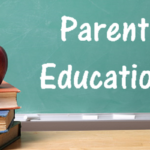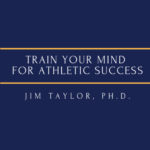Anyone who follows my posts on public education reform (here’s a good place for a primer) knows that I am not a fan of the Obama administration’s public education initiatives, including Race to the Top. The programs are, in my view, mislabeled, misdirected, and misguided. I would have used the word hate to describe my feelings toward current public education reform efforts, but I have held it in reserve going under the assumption that another plan to save public education (again) will come along that really deserves that moniker.
Returning to my previous posts and adding the latest news from the education reform front , I have offered for your reading pleasure (or perhaps disgust) my Seven Reasons to Really Dislike about Public Education Reform:
1. Public education reform is dishonest (though not maliciously so). It is not about public education reform. The reality is that public education is doing just fine in many parts of the country. What reform is really about is educating our disadvantaged youth, who reside mostly in inner cities and the rural South, and closing the achievement gap that exists between the haves and have-nots. This means that a lot of money and unnecessary regulations are being directed to school districts, generally affluent and suburban, that simply don’t need it. It may be equitable, but it’s not fair.
2. More of the same. We’ve devoted decades and billions of dollars to doing more or less the same thing. Have you heard the definition of insanity, “Doing the same thing over and over again and expecting different result?” Well, current reforms are insane. The lessons from this ongoing failure haven’t been learned, so they are bound to be repeated (and they are). We must do things dramatically differently rather than continuing to make iterative changes that don’t depart far from the current public-education groupthink. We need fresh ideas that lie outside of that box in which most so-called education reformers are currently packed.
3. Teaching to the test is the focus. The problem is that teaching to the test doesn’t have much to do with actual education. We have lost sight of what testing is, not an end in itself, but rather a tool to assess real education gains. Not just improved test scores due to improved test preparation, but improved education due to improved learning. With the emphasis on reading and math skills aimed at passing the tests, school curricula are narrowed, depriving students of valuable exposure to the arts, physical and social sciences, and humanities. In other words, students don’t get a true education, even if their test scores improve which, by the way, they haven’t significantly in response to these efforts (or NCLB for that matter). Also, the emphasis on testing sucks the joy out of teaching for teachers and students for learning, so everyone loses by being forced to play this game.
4. Cheating is encouraged. Even the most nobly driven professions, such as teaching, will do what they have to do to survive. And survival in public education means getting the funding dangled like a carrot by our federal government (or perhaps a better metaphor is a dehydrated man crawling across a desert offered a drink of water). And we are seeing this play out at all levels of public education. States are gaming the system by watering down standards (“watering down” equals cheating, in my view). Schools are engaging in attendance and grade fraud. Teachers are giving answers to students on their exams, changing poor grades, and advancing undeserving students. And, last but not least, students are cheating to get better grades.
5. Teachers are seen as the problem. I admit that teachers’ unions signed some sweetheart deals that weren’t in the best of interests of students at the time and aren’t good now. But they see the writing on the wall and are coming around. Regardless, teachers’ unions aren’t the teachers. And, yes, there are some bad teachers, but certainly not enough to blame our public education failures on them. The teachers are the people who fight the good fight every day against enormous odds for low pay and even less respect.
6. Local control of curricula. The conventional wisdom is that states and local school boards know what’s best for educating our children. This belief may have been true a half century ago when people tended to live and work where they were raised. Local control ensured that children learned what was necessary to fit into and contribute to their local communities. But times have changed. Our mobile society and a global economy have obliterated district, county, and state lines that once had meaning. And local control means curricula that are supported by decades of inertia, groups invested in the status quo (e.g., teachers’ unions, school board, textbook publishers, testing companies), and provincial and ill-informed educational, political, social, and religious ideologies. A national curriculum would mean more consistent education, higher standards, less gaming of the system, and children who are better prepared for the flat world in which they will live.
7. The root cause is missed. This reason is the big one for me. Current efforts, such as Race to the Top, assume that the problem is failing schools; if you fix the schools, you fix the students. But failing schools are the symptom, not the problem. The real problem is failing students who are simply unprepared to succeed when they begin school. Poor children start far behind kids from middle- and upper-income families because they lack the attitudes and basic learning skills necessary for academic success. Any effort to improve these areas once they arrive at school is just a game of catch-up in which the vast majority of these students never catch up. It’s simple (but not easy), you fix the children, you fix the schools, you fix the problem of public education. The solution then is to change the environment in which disadvantaged children are raised before they get to school: better child care and pre-school, parent education, books in poor homes, a living wage so parents don’t have to work two or more jobs, and safe neighborhoods. That doesn’t mean that we shouldn’t also reform the schools; you put prepared students in lousy schools and they will fail too. But quality schools are necessary, but not sufficient, to fix public education’s current long-standing woes.




